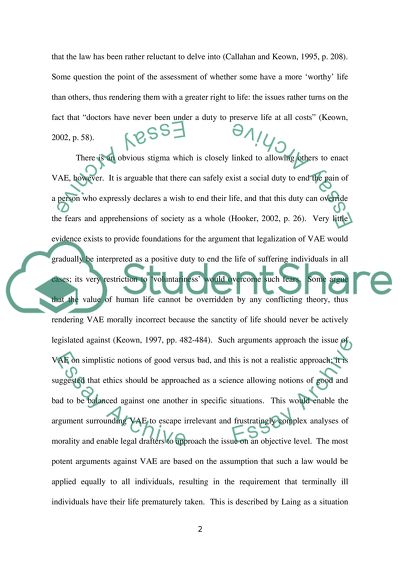Cite this document
(“Voluntary Active Euthanasia Research Paper Example | Topics and Well Written Essays - 1500 words”, n.d.)
Retrieved from https://studentshare.org/philosophy/1436438-voluntary-active-euthanasia
Retrieved from https://studentshare.org/philosophy/1436438-voluntary-active-euthanasia
(Voluntary Active Euthanasia Research Paper Example | Topics and Well Written Essays - 1500 Words)
https://studentshare.org/philosophy/1436438-voluntary-active-euthanasia.
https://studentshare.org/philosophy/1436438-voluntary-active-euthanasia.
“Voluntary Active Euthanasia Research Paper Example | Topics and Well Written Essays - 1500 Words”, n.d. https://studentshare.org/philosophy/1436438-voluntary-active-euthanasia.


